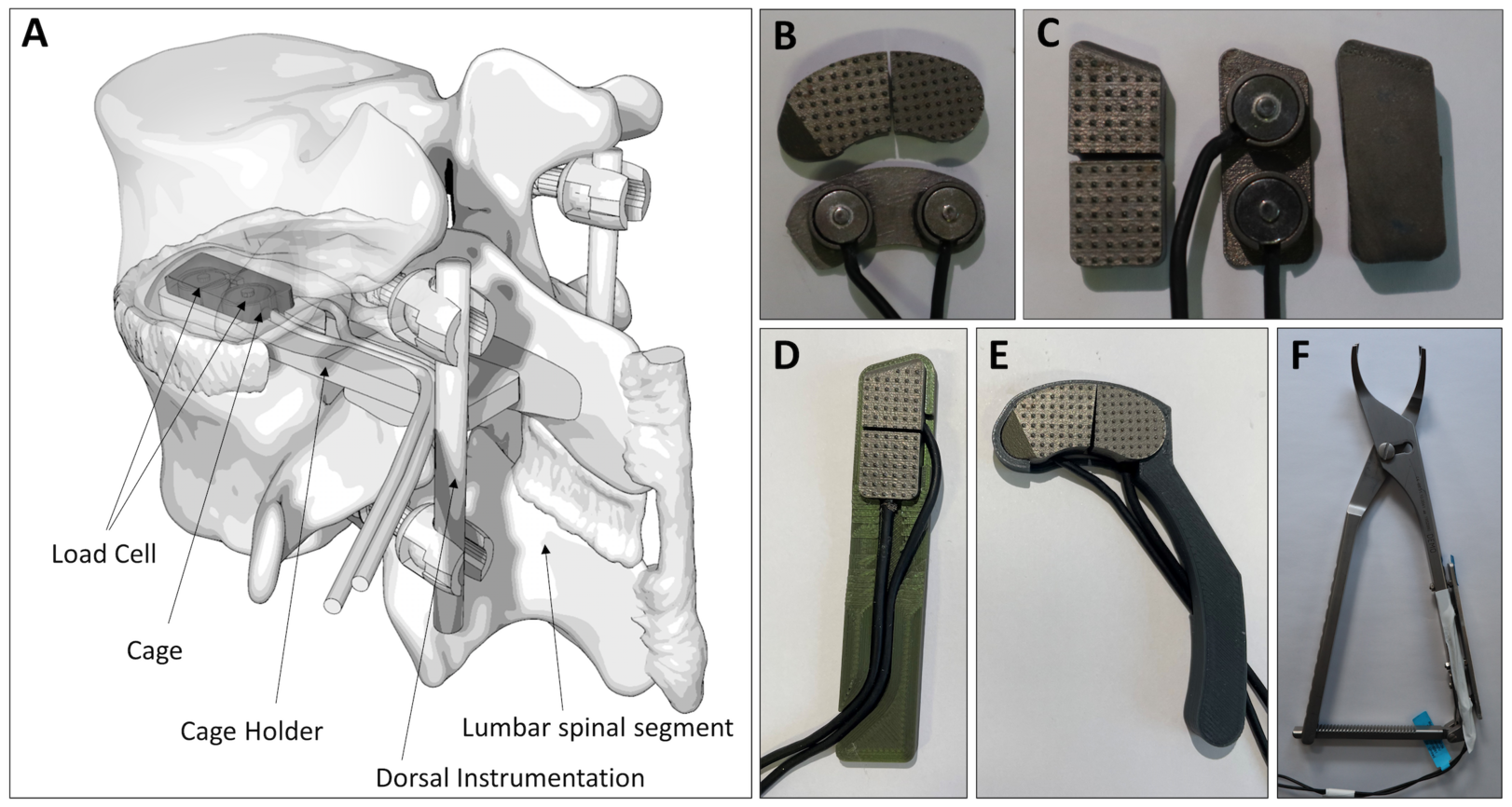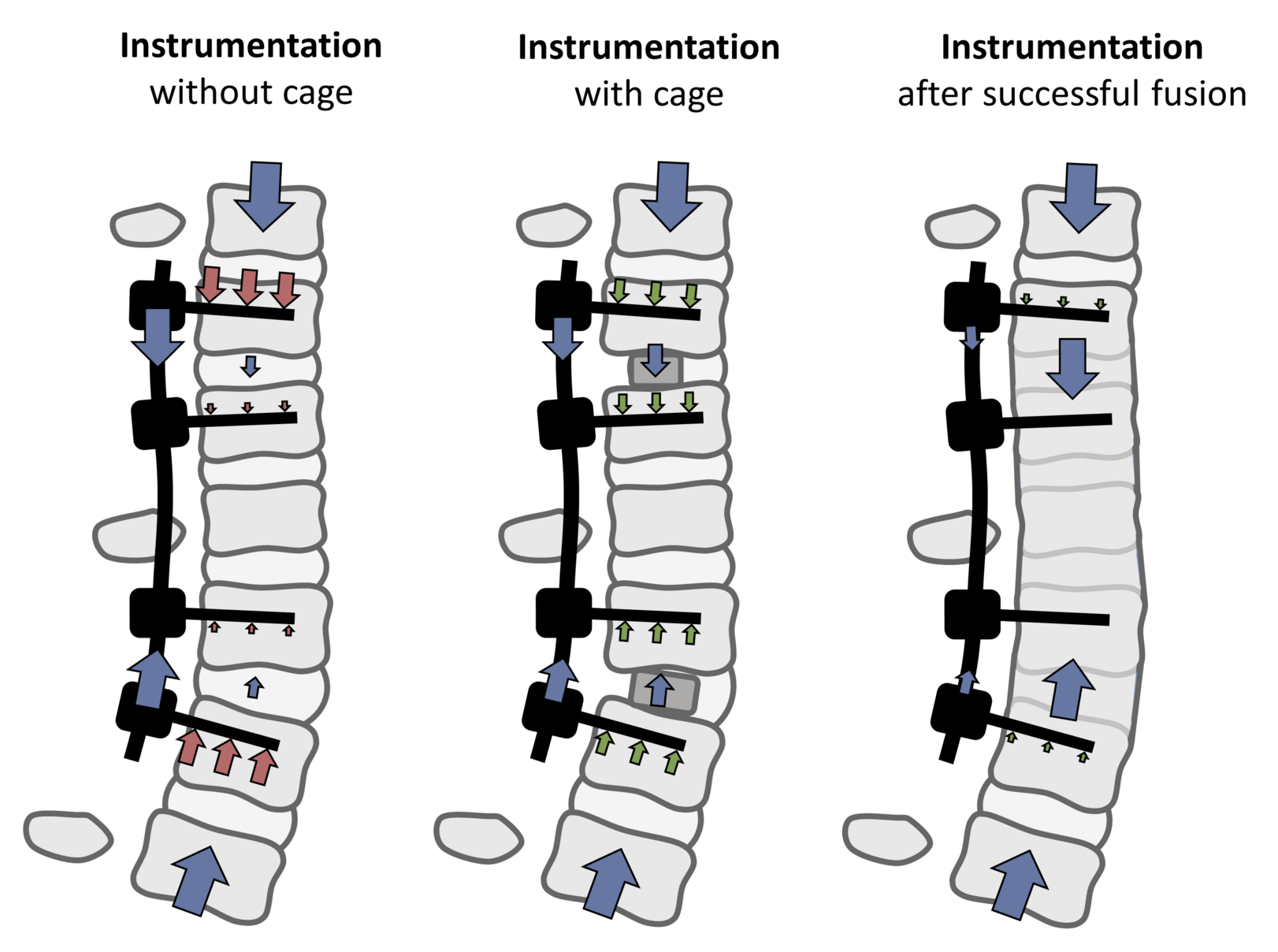Load distribution on intervertebral cages
This project aims to investigate and quantify the forces acting under axial compressive force on intervertebral cages with and without posterior instrumentation.
Lumbar interbody fusion is an established surgical procedure for the treatment of degenerative diseases of the lumbar spine. The use of cages in fusion surgery has important roles/advantages in this regard:
biological function: bone material is inserted via the cage, which supports bony fusion.
cage insertion increases the intervertebral space, restoring sagittal and coronal alignment of the spine
the cage may transfer some of the vertical compressive forces acting on the spine under physiological conditions to the ventral column of the spine.


Quantifying the forces that actually act on intervertebral cages is therefore important to prevent complications such as early screw loosening, pedicle fractures and cage sintering. Furthermore, to optimize the design of cages and to define the requirements that have to be met by the materials used for cage fabrication.
